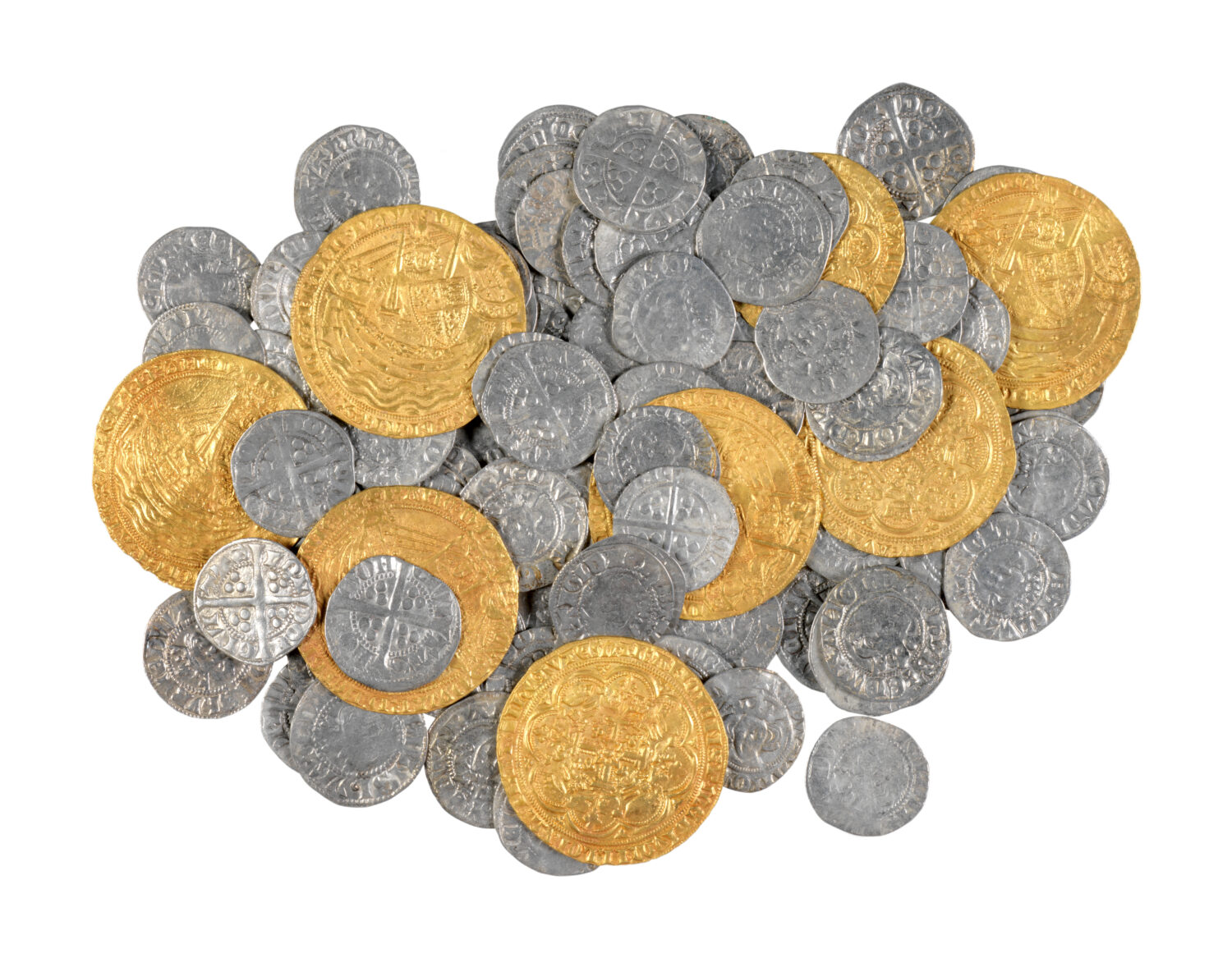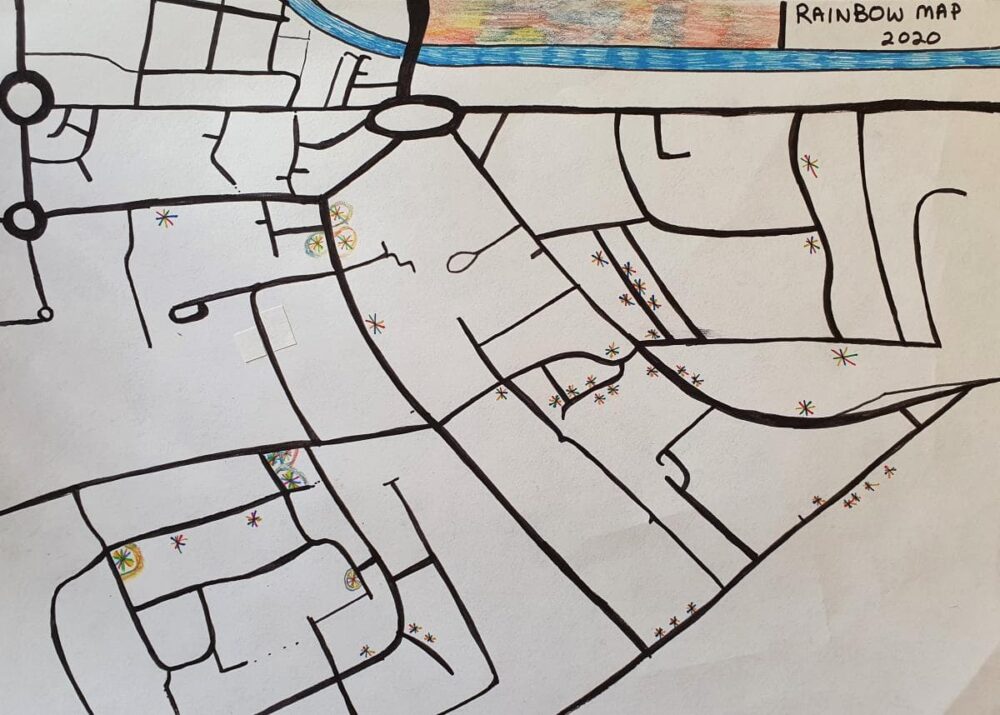Look and Think activities should take 5 -10 minutes.
Do activities might take longer depending on the task and how creative you are feeling!
Hidden at Chesterton Lane Corner (c. 1350) and found in 2000.
Look
Some amazing discoveries from the past were made by accident.
These coins was unearthed while digging a sewage pipe on Chesterton Lane in Cambridge in 2000. They found 1800 silver coins. How many gold coins are there?
Think
This hoard of coins was hidden nearly 700 years ago. Why do you think someone might hide their treasure?
Imagine what it would be like to discover your own treasure.
Do
Go on a treasure hunt in and around your home. Can you find the oldest thing? The smallest? Something special to you?
Now find something for someone to find in the future. Where will you hide it?
Make a treasure map to help to remember where you put it. We’ve put an example below.

Our map shows the rainbows we found on our daily walks during the first lockdown in Arbury and Chesterton.

We asked Dr Martin Allen, Senior Assistant Keeper of The Department of Coins and Medals, at The Fitzwilliam Museum to tell us more about his favourite object in the museum:
“The discovery of this hoard was one of the most exciting things for me during my time at the museum. As an expert on medieval coins I had always hoped that someone would find a coin hoard in Cambridge one day, and I was overjoyed when I received a phone call from the Cambridge Archaeological Unit in October 2000 to say that they had found a hoard at Chesterton Lane Corner!
The archaeologists had been excavating the site of a new sewer shaft – not a very glamorous location, but they made some extraordinary discoveries. They uncovered various layers under our feet; at the bottom of the hole was a prehistoric river channel; above that a Roman road and part of an Anglo-Saxon cemetery; above this were the remains of a medieval house in which the hoard had been buried in the 1350s, shortly after the Black Death wiped out a large part of the population.
After the hoard was acquired by The Fitzwilliam Museum and conserved at The British Museum I spent many weeks identifying the coins. Most of the coins are silver pennies, which were the main kind of money in England until the Black Death, but there are also nine magnificent gold coins from the 1350s. The total value of the hoard was more than £10, which was an enormous sum of money at the time, equivalent to many years of earnings for most people (approximately £5000 pounds in today’s money).”
Download this Look Think Do as a PDF or a Word document.